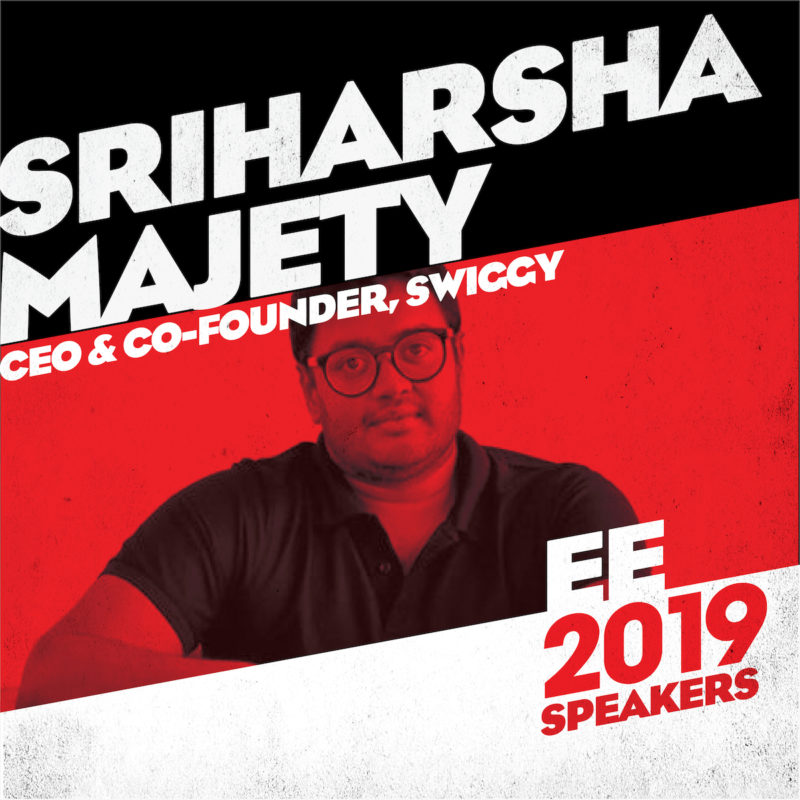For our second masterclass at Extreme Entrepreneurs 2019, we were extremely fortunate to have Sriharsha Majety, co-founder and CEO at Swiggy join our mission of inspiring high potential founders. In his conversation with Bejul Somaia (Partner, Lightspeed), Harsha brought to life perspectives on “What’s possible: Go big or go home” by exploring his own journey of building Swiggy into one of the most iconic companies in the Indian venture ecosystem. We’ve tried to capture some key learnings below for wider benefit.
Ambition
“In the early days, it is hard to point at something and say with certainty that this will be a billion-dollar business. However, there are moments in your journey that unlock ambition of a different magnitude.”
Harsha recalled the early days of running a B2B logistics business for a year, and how soon enough they knew in their gut that it couldn’t become a large company. “It wasn’t worth our opportunity cost.” Starting a small urban delivery business emerged from a personal need and a feeling that “something like this should exist”, but the scale potential wasn’t obvious from day one. Food delivery was a small market. Reaching 3k orders day in 18 months would have been “success.”
Turns out, Swiggy hit 3k orders/day in 4 months. For Harsha, paying attention to business signals completely changed his perspective. When looking at repeats, he noticed that customers were using the service 4.5–5 times/mo; 10% were using it even 25–30 times/mo. The realization dawned upon him that Swiggy wasn’t just an indulgence, it had to the potential to become a utility. It wasn’t restaurant delivery anymore, but food consumption. “We understood that if we execute right, there’s a 1000x opportunity here…”
Competition
“Even though market was competitive, we didn’t think we were playing in the same paradigm. Maybe we were naïve. However, the level of customer obsession and experience we were striving to achieve didn’t exist anywhere else. This was our reason to exist.”
All along, there has been unwavering clarity at Swiggy that the customer is front and center of the business. The most important stakeholder. There were 3 simple yet core insights that served as pillars to excellent service — i) best restaurant selection, ii) no minimum order, and iii) quality of delivery (measured as delivery-time). This clarity served as the company’s north star. However, Harsha acknowledged that in competitive environments, there are times when the team might get carried away. The onus always lies with the CEO to keep stress-testing and ensuring that the organization doesn’t sway from core beliefs.
Intellectual honesty is quintessential. “I’m scared of riding a tiger… if you fall, you get eaten up.” For instance, in going through cycles of incentivization and subsidy-led pull, what kept the team honest was paying attention to customer behaviour when the subsidies go away. Do users retain? Do they repeat? Harsha suggested that no matter the scale, you should keep testing for product-market fit (PMF). If the users are not sticking, go back to the drawing board.
Growth
“As the company grows, finding new avenues of growth and building moats needs thoughtful decision making and timing. Don’t do too much too soon.”
It becomes harder to sustain growth momentum as you scale. Ask — how can I continuously build higher frequencies and extensions for customers so the portfolio maintains momentum? Over the years, Swiggy has been adding newer horizons beyond the core food delivery business. These include private label brands and kitchens, as well as Swiggy Stores that enabled the move from delivering food to delivering anything! Practically speaking, these choices will manifest in your capital allocation strategy e.g. choose to be outspent on core business, so you can seed the other businesses.
Vision extensions can either be consumer backward or capability forward. In choosing a direction, you need to maintain the balance of effort and impact. Capability forward may be simpler to execute, but not become as large as you’d like for it to be. Consumer backward might have high impact, but often requires LOT of effort especially if the competence is disjoint from company DNA till that point.
Concluding on a very realistic note, Harsha told the founders that at early stages it’s okay to not fully understand your business. “Even today, I probably only know ~70% of how my business works. Back then, it was only 5%. More than having all the answers or a grand vision, what’s most important is to keep asking the hard Qs.”
To stay updated, follow EE on twitter here and the official Lightspeed India handle here

